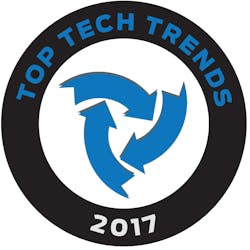Last September, Jonathan Perlin, M.D., chief medical officer of Hospital Corporation of America, was asked what he would tell the new president to focus on in terms of healthcare. His response was: “It’s all about the data.”
The notion of a learning health system is defined as a system that commits to the continuous use of data as a byproduct of care for continuous learning and a virtuous cycle. Perlin pointed out that 98 percent of hospitals and 95 percent of physician practices are now computerized. “We are clicking, but we’re not yet learning,” he said. “By virtue of all that clicking, a ‘data exhaust’ is created, and in the data are answers to numerous questions,” he said. That data exhaust in the form of structured data could be fed back into the system to spur discovery, knowledge and better population health management.
The potential of big data that Perlin described is starting to become a reality at some of the leading health systems in the country and through some consortia, but as Sarah Greene, executive director of the nonprofit Health Care Systems Research Network (HCSRN), points out, using data to create a seamless interplay between research and care delivery is very hard to pull off. There are operational, technical and financial issues to work through, she says.
“Culture is a huge consideration in a couple of different ways. It is not in the day-to-day job description of front-line practitioners to be thinking about research,” she says. “So the researchers have to understand the priorities, languages and norms that drive care delivery. It is incumbent on the researchers to do that work rather than expecting the operational people to just throw open the doors. That is a paradigm shift for a lot of people.”
Sarah Greene
The HCSRN now has 20 members including Kaiser Permanente, Catholic Health Initiatives, and Geisinger Research. In 2001 it started doing large multi-center studies with the creation of a cancer research network. The members have worked through data harmonization issues to create a “virtual data warehouse” and a common data model. But to put findings into practice, researchers have to build strong relationships with the care delivery system, Greene notes. “Those take a long time to form. You have to be in it for the long haul.”
Paul Bleicher, M.D., Ph.D., CEO of OptumLabs, a collaborative research and innovation center, says the partners his organization works with are doing research with a translation orientation. They are looking to take the results of research and apply them by creating new guidelines and measures. They are using the data to create predictive models — to identify clusters of patients and new treatment pathways. “What is becoming even bigger now and is going to have the most impact on healthcare but is just in its infancy is the use of deep learning and continuous learning methodology for identifying and predicting addressable issues,” he says.
One example of a growing learning health system is Mayo Clinic, which was OptumLabs’ first partner. “Their philosophy is they will not start or maintain a project unless they have a clinical or quality team that is ready to capture the results of that project and move it into operations,” Bleicher says. Mayo has between 20 and 30 ongoing research projects with OptumLabs.
Paul Bleicher, M.D., Ph.D.
OptumLabs also is devoting more resources to training data scientists through internships with partner organizations, including the University of California. “We believe there is a critical shortage in the United States of data scientists who understand modern machine learning and deep learning, and that it is going to set back the entire industry if we don’t do something about it,” Bleicher says. “We are intensifying specific training around healthcare data.”
Putting Patients at the Center
Harlan Krumholz, M.D., director of the Center for Outcomes Research and Evaluation at Yale-New Haven Hospital in Connecticut, argues that putting patients in control of their data and making it easier for them to participate in research could jump-start the big data/learning health system model.
“This is an essential chokepoint in our ability to make progress,” Krumholz says. Although large-denominator studies of episodes will always have some utility in giving researchers a big picture, he argues that a few key things are missing in the data we have now: one is a longitudinal perspective—most people are utilizing healthcare in a variety of places and their whole story doesn’t unfold from any single data holder’s perspective. “So even when you accumulate 200 million medical records, as some of these big companies have, they are fragmented and episodic and it is hard to tell the entire story,” he explains. The second thing we are missing is the patient perspective regarding their symptoms and experience. Studies show that what is documented in the EHR and what people actually feel are often two different things. This kind of information can be increasingly available from wearables and self-reported information. “The only way that works well is if we work in partnership with people, and say it is your data, it is going to help you, you should have agency over it, and if we can develop a trustworthy partnership, you may feel comfortable sharing it in ways that not only help you, but others, too.”
Krumholz has said that the significance of the Precision Medicine Initiative’s commitment to allowing patients to participate by sharing their data is underappreciated. Much of the attention about the rollout of the initiative, now branded as “All of Us,” was on the precision aspect, he notes. One key to PMI was the development of tools that enable patients to acquire their data from multiple providers. “Coming out of NIH [National Institutes of Health], from the president’s signature program, to say we are going to be doing research in this way is nothing short of revolutionary. The endorsement from NIH is remarkable.”
Breaking Down Organizational Barriers
One exciting thing about big data research is that it is starting to break down barriers between organizations and disciplines. For example, the 15-member Children’s Brain Tumor Tissue Consortium, run out of the Children’s Hospital of Philadelphia (CHOP), is partnering with the Pacific Pediatric Neuro-Oncology Consortium to share their data collections on rare pediatric diseases and cancers using CAVATICA, a cloud-based biomedical data analysis platform. “We have created an ecosystem to support a learning health system, not just for one institution but for all of them,” says Adam Resnick, Ph.D., director of the Center for Data Driven Discovery in Biomedicine at CHOP. “We had to build an infrastructure that reached from the biospecimen to the clinical informatics space to the molecular diagnostic space and we had to build it in a way that is radically transparent, so no single institution has any privilege to that information.”
Adam Resnick, Ph.D.
Resnick says that because pediatrics sits outside the mainstream of big data research, it is able to be more nimble in driving new practices in ways that the existing status quo community cannot. “We modeled some cultural practices for our data-driven efforts from the music industry, Uber and Airbnb,” he explains. Whereas traditionally data was seen as a commodity that you maximize through your own extraction of value, it turns out in the information age, there is great value in connectivity. “Connectivity and empowerment on behalf of a consumer — in our case a patient, a researcher, or a clinician — that in itself has tremendous value. Competing to share is something we see as a value-based approach that aligns with the moral mandate of accelerating discovery on behalf of children.”
Bringing Research, Care Closer Together
HCSRN’s Greene believes the term “learning health system” could turn some people off because it sounds too jargony. “If you ask people to get involved in improving the quality of their healthcare delivery and you call it quality improvement, that resonates with people more than saying we want you to be part of this learning health system.”
She says if there is something keeping her up at night these days, it is concern about future federal funding for this type of research in the Trump administration. But she sees two good signs: The first is that Francis Collins, M.D., Ph.D., has agreed to stay on as director of the National Institutes of Health. “He is a proponent of big data and understands the learning health system,” she says. The other encouraging sign is both the National Cancer Institute and the Agency for Healthcare Research and Quality have made stated commitments to training researchers in doing healthcare delivery-based research. Also, the Patient-Centered Outcomes Research Institute (PCORI) has provisionally agreed to put $30 million into training researchers to do learning health system-based research. “So people get it,” she says. “There is still going to be a recognized need to bring research and care closer together.”



